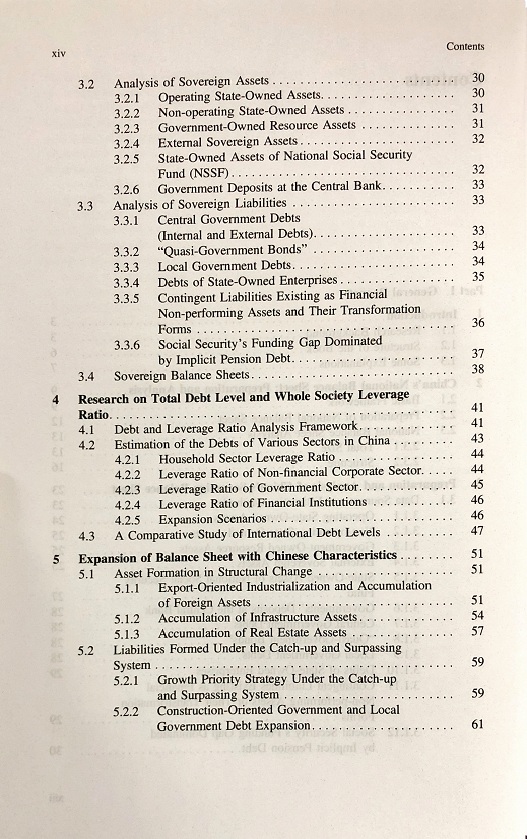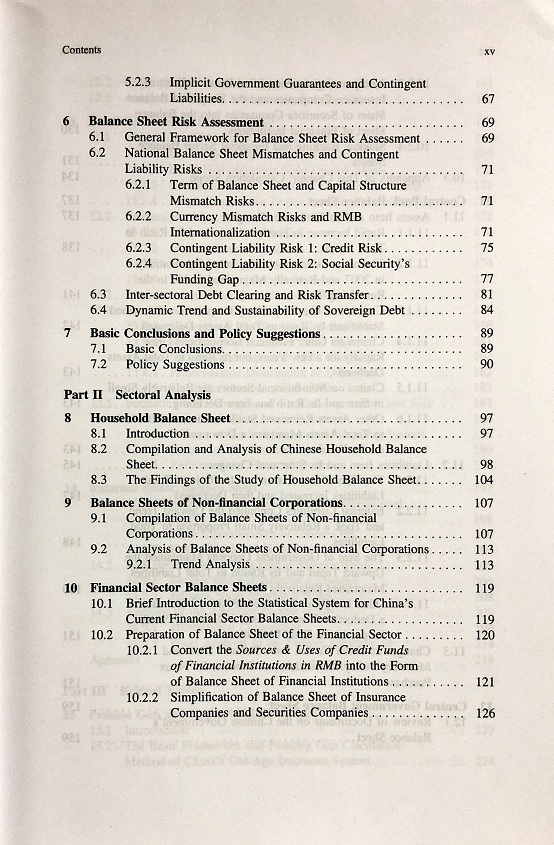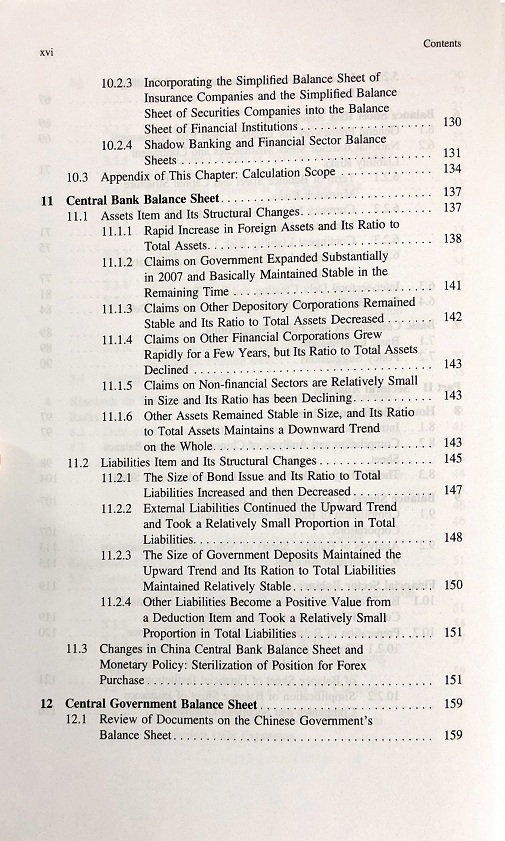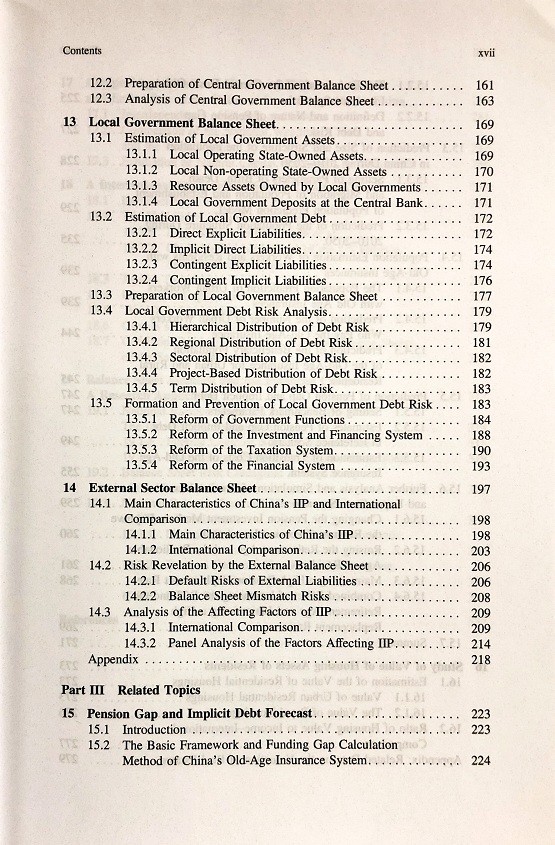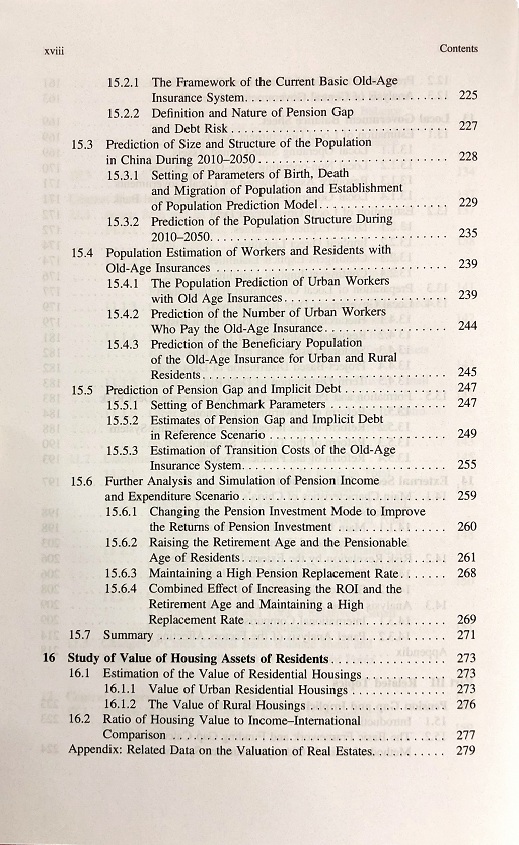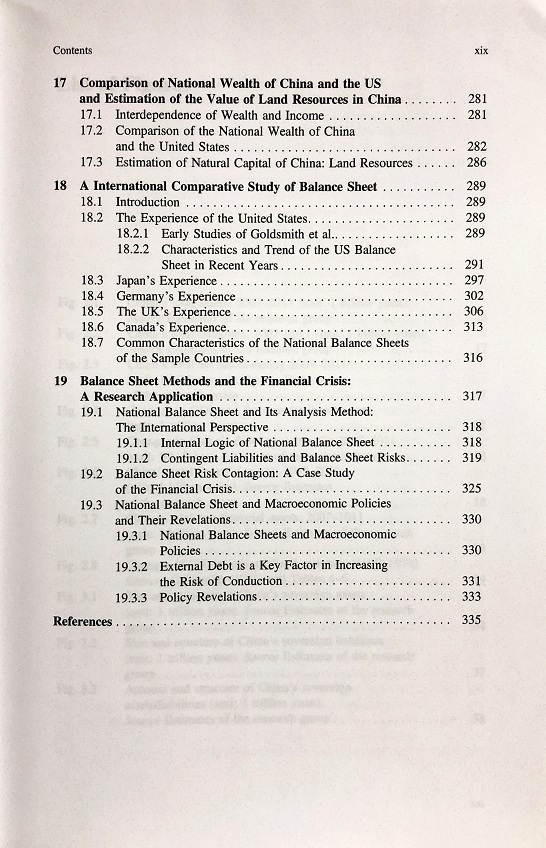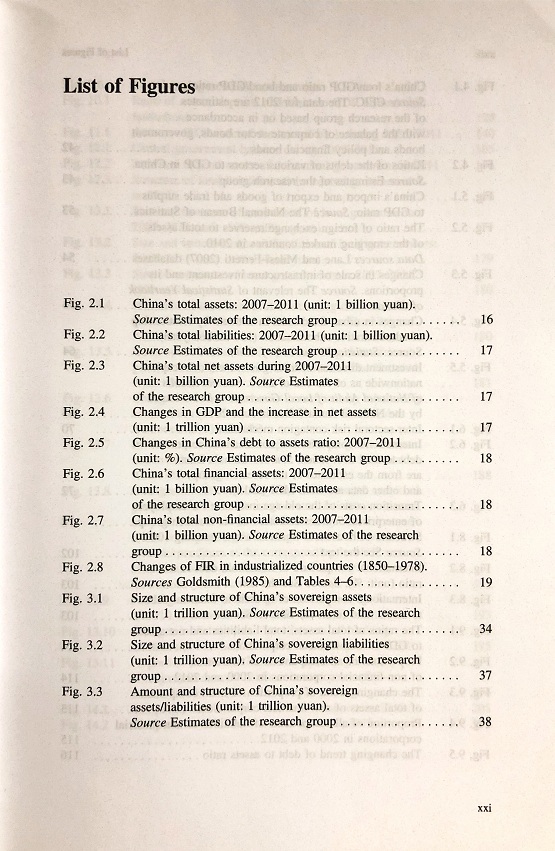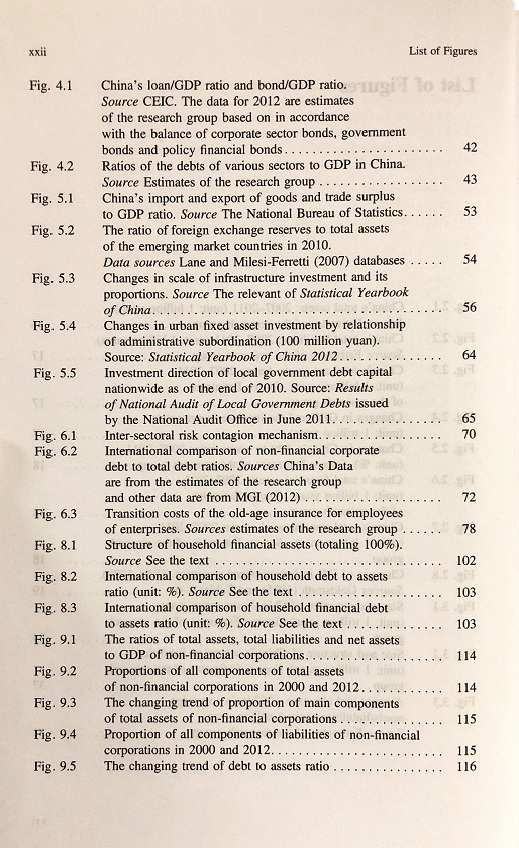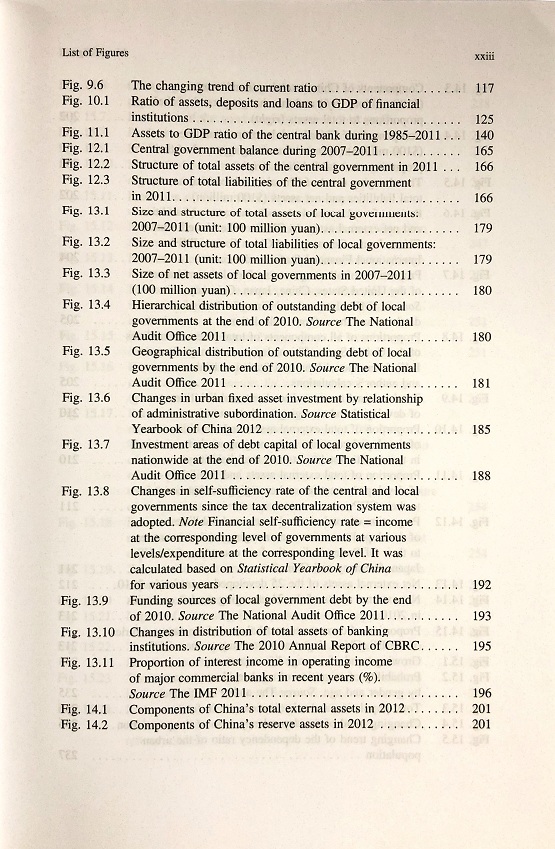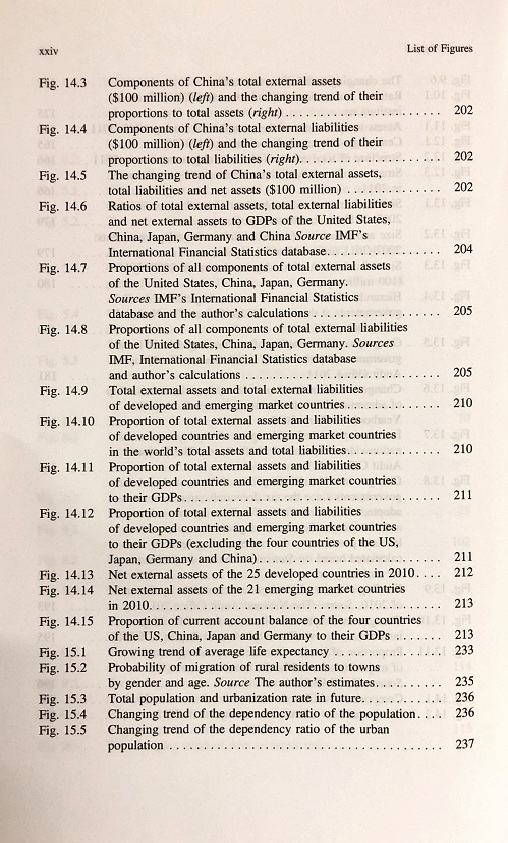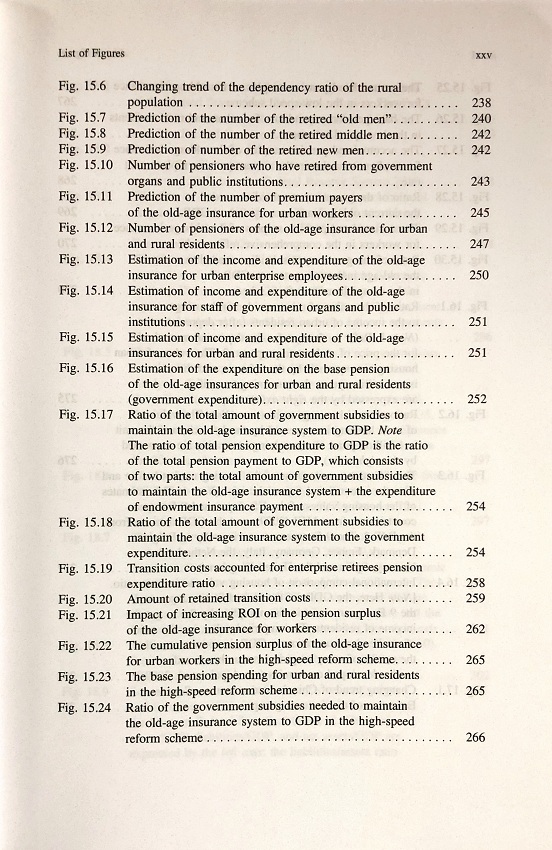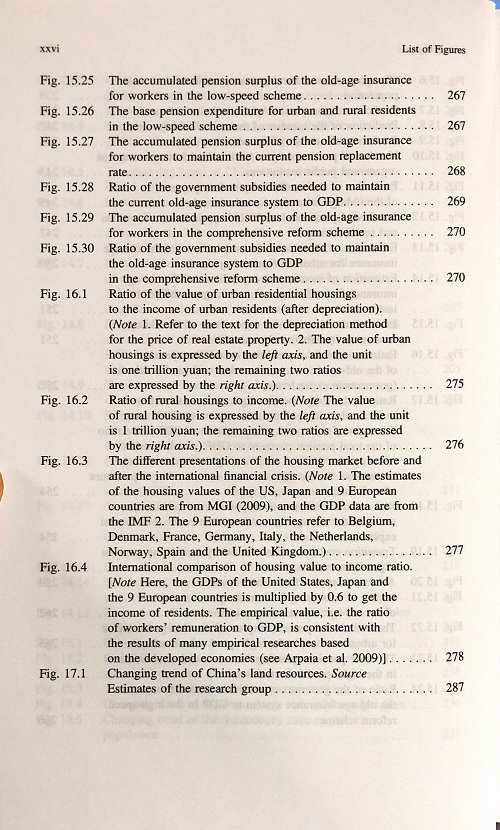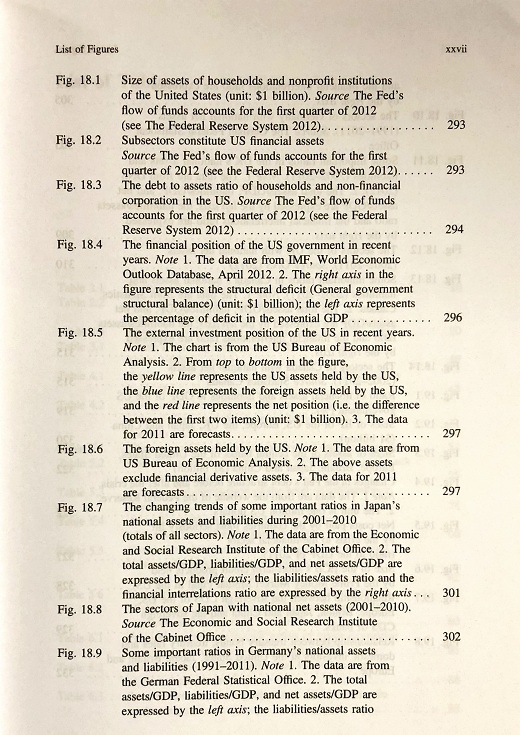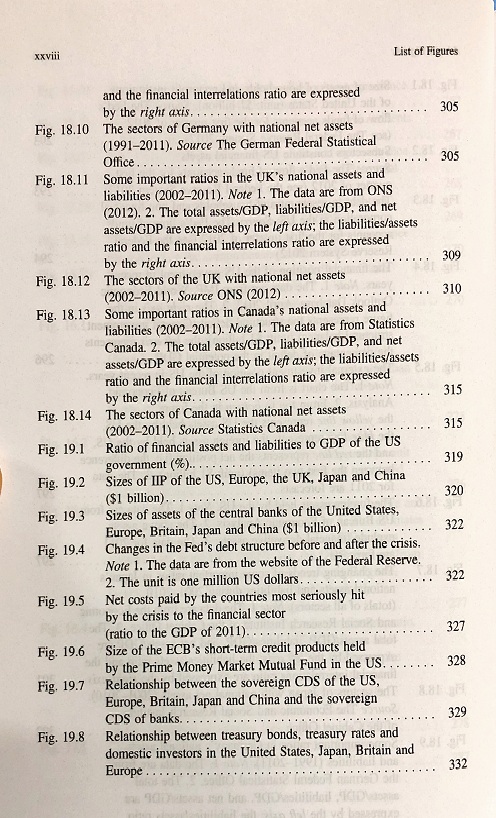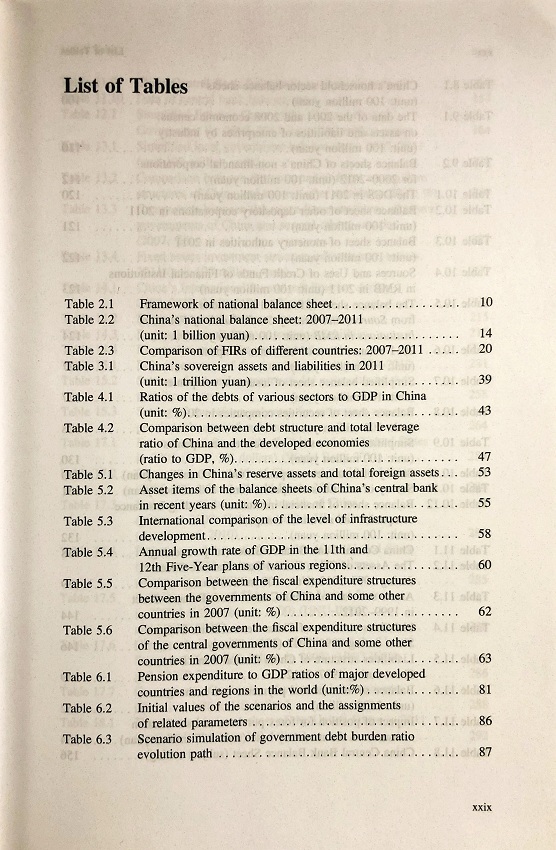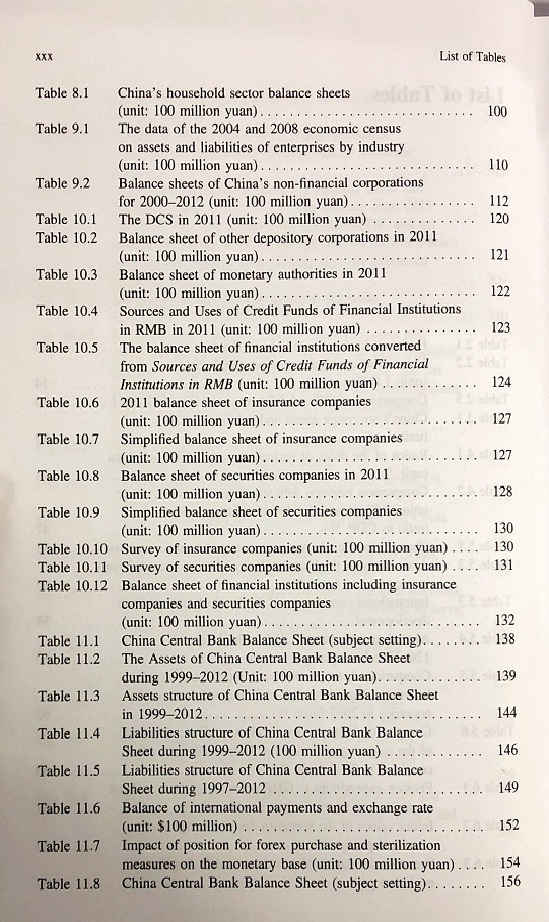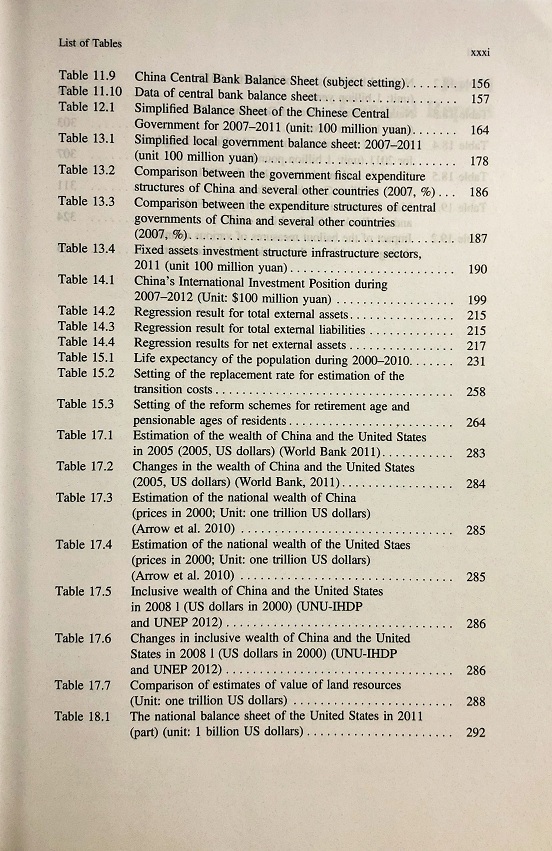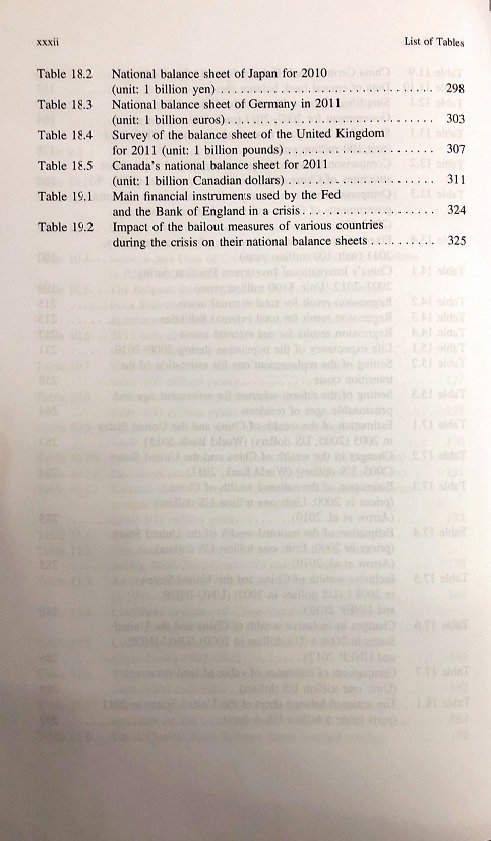订阅邮件推送
获取我们最新的更新

In 2012, the three research teams led respectively by Dr. Cao Yuanzheng, chief economist at the Bank of China, Dr. Ma Jun, Deutsche Bank's chief economist for Greater China, and I carried out research on China's sovereign balance sheet almost simultaneously and have published the lengthy analysis reports successively. In the Chinese research community, it is rare for several research teams to invariably study a boring topic that is purely “monarchy trickery”. That is because, since the end of 2011,due to the debt problems of the Chinese local government financing platform and the slight downturn of the Chinese economy, pessimistic views about the prospects of China from many foreign research institutions and investment banks have resurfaced;some international statistical rating organizations even down-graded China's sovereign rating. Chinese economists can't just sit back and do nothing about this. We are duty-bound to prepare China's sovereign balance sheet (especially the government balance sheet), carry out in-depth analysis of the origins, current status, characteristics and development prospects of the government debts at all levels in China and assess the sovereign debt risks.
Balance sheet was originally an indispensable basic tool for enterprises to per-form scientific management. Based on accrual accounting, a balance sheet or statement of financial position is a summary of a series of carefully designed financial balances. From the perspective of liabilities, a balance sheet reflects a company's total liabilities and their structure at a specific point in time and reveals the amount, urgency and solvency pressure of its current and future debts; from the perspective of assets, a balance sheet reflects a company's total assets and their structure at a specific point in time and reveals its economic resources, resource distribution and profitability. Based on its liabilities and assets, we can assess the performance of a company, analyze its financial flexibility and safety and measure its solvency and operational stability.
In the mid-twentieth century, the U.S. economist Goldsmith tried to introduce the unique analysis function of balance sheet into state governance (see Goldsmith and Lipsey 1963;Goldsmith 1982) and prepared the sectoral and aggregate national balance sheets on a trial basis. Later, the developed economies followed suit one after another. So far, most of the OECD member countries have published their financial balance sheets excluding physical assets.
It was after the Latin American debt crisis in the 1990s that the world had a different face for the national balance sheet due to its important role in state governance and even economic analysis. Unlike the past crises, the Latin American crisis was mainly caused by excessive borrowing, thus showing the typical characteristics of a debt crisis. Therefore, balance sheet as an analysis framework that can accurately portray a country's a debt risks and assess its solvency has naturally won the favor of the international community.
After balance sheet, as a mainstream analysis tool, was introduced, a series of new achievements were quickly made. Among them, what was particularly fresh and new was the reinterpretation of the past crises, especially the interpretation of some special phenomena during the spread and recovery of a crisis. In this regard, the research findings of Richard C.Koo, chief economist of Nomura Research Institute in Japan, were most famous(Richard C.Koo 2008).In his view, main-stream economics missed the point in explanation of the causes for the Great Depression and Japan's "two lost decades" since the 1990s.He believes that the currency demanders rather than the suppliers should be blamed for the crisis. Japan's “Great Recession” that began in 1990 was a “balance sheet recession". It was triggered by a collapse in land and stock prices, which caused Japanese firms that had excessively expanded their businesses to have negative equity, meaning their assets were worth less than their liabilities. Therefore, even though companies were still operating, they had been caught in a situation of technical insolvency. The point was, in such case, most companies shifted their business objective from profit maximization” to “debt minimization”. That is, while reducing or even stopping lending, companies opted to pay down their debts from their own cash flows, or you may say, did their upmost to "repair their balance sheets". If many companies were pursuing this "debt minimization” measure, the whole society would form a "fallacy of composition" in which companies did not attend to business or investment, but specialized in paying debts, so even though banks were willing to provide loans, no company would borrow money from them. The credit crunch of the whole society would thus form. The crisis recovery process would therefore slow down.
The “once-in-a-blue-moon” global economic crisis demonstrates once again the charm of asset and liability analysis. The crisis was also triggered by operation or consumption on borrowings of residents, businesses and governments in developed countries and high leverage operation of financial institutions. Therefore, to recover from the crisis, “deleveraging" is apparently a necessary condition. However, deleveraging involves at least two issues. First, deleveraging needs plenty of savings and huge capital investment; while the savings rate can not be raised arbitrarily. and it is more difficult to find funds. Second, deleveraging as a major path economic recovery will lead to a comprehensive “balance sheet repair” process. In his process, after economies obtained additional funds, they will opt to enrich the capital, reduce debts and “repair” their balance sheets rather than engaged in normal economic activities the monetary authorities want to produce, such as consumption, production and investment. Thus, injecting liquidity into the economy will on the contrary produce stagnant consumption, sluggish investment and credit market contraction in a long period of time.
An incredible case occurred in the U.S. Although in the past and the Treasury have created dollars to such an extent that the U.S. and even the world were awash with liquidity, the U.S. credit markets were still in decline, so the Fed continued to expand its quantitative easing program, and its assets and liabilities have increased unprecedentedly by three times.
It is particularly worth mentioning that China has actually felt the impact of assets and liabilities this time. On the one hand, corporate and governmental debts continued to rise and have reached the level of severity that might be cashed in on by persons with ulterior motives; on the other hand, money and credit supply expanded significantly, but the real economy still thought it “difficult and costly to get loans”. These complex problems need to be addressed quickly. To prepare China's national balance sheet, we must first of all have a “clear idea in mind”, which is apparently the basis and prerequisite for addressing all the problems.
The research group of the Chinese Academy of Social Sciences (CASS)for “Research on China's National Balance Sheet" published its first findings in 2012. At that time, we had completed the preparation of China's Sovereign Balance Sheet (2000-2010),and the major findings were published on Issue 6-7 of Economic Research Journal in 2012.Li Yang, Zhang Xiaojing, Chang Yan, Tang Duo Duo, Li Cheng: China's Sovereign Balance Sheet and Risk Assessment(Vol.1 and 1), Issue 6-7 of Economic Research Journal in 2012.The research findings of the research group have been repeatedly cited by the IMF(IMF 2013),the Research Bureau of the People's Bank of China and some well-known domestic and foreign investment banks. In addition, the research paper in English on China's sovereign balance sheet has been included in the monograph published by the IMF. In September 2012, the research group held the International Seminar on Chin's National Balance Sheet Analysis, and more than 60 well-known experts and scholars from, the People's Bank of China, the National Bureau of Statistics, the World Bank, the IMF and related fields attended the seminar. Experts naturally showered praise, but they also raised poignant suggestions on further improvement and promotion. The book was written with reference to these suggestions. The book fully updated the data on the basis of the research findings in 2012 and added the contents and analysis of China's national balance sheet. The book's key findings can be summarized as follows:
1.In 2011, China's net national assets (non-financial assets plus net external assets) was over 300 trillion yuan. China's national balance sheet expanded rapidly in 2007-2011: China's total assets increased from 284.7 to 546.5 trillion yuan; its total liabilities increased from 118.9 to 242 trillion yuan;and its net assets increased from 165.8 to 304.5 trillion yuan. These three indicators nearly doubled in the five years, with a growth rate higher than the growth rate of the nominal GDP over the same period.
China's overall liability-asset ratio, i.e. ratio of total liabilities to total assets, shows an upward trend as a whole, especially in the two years of 2009-2010 with more serious impact of the financial crisis. It fell slightly later in 2011, but was still much higher than the level in 2007.This structural change shows an increased reliance on debt financing in the formation of national assets and consequently higher debt risks.
2.The increase of China's net national assets was continuously less than the year's GDP, indicating that not all the GDP has been transformed into real cumulative wealth. In other words, a fairly large part in our GDP output is invalid. This is because the GDP indicator has some congenital defects: some invalid investment (corresponding to the excess capacity) or even activities that destroy resources and environment are included in the GDP, so these parts should be excluded in wealth formation. Taking 2010 for example, the gap between the increase of net assets and GDP was up to 7.5 trillion yuan, accounting for 18.7% of GDP. Although we cannot assert that this 7.5 trillion yuan has been wasted or lost, but it at least shows that there is some serious problem with the quality of this year's GDP.
3.The inventory to total assets(ITA)ratio has surged in recent years, showing that the overcapacity problem is very serious. There are always two explanations for inventory and its changes: this may reflect the expectation of an enterprise for the economic recovery (which is mostly reflected as positive inventory replenishment or can be understood as a positive inventory increase),or may be related to the current widespread overcapacity in China (which is mostly reflected as passive inventory accumulation or can be interpreted as negative inventory increase). We tend to believe that the later cause, namely overcapacity, may be a major factor for the surge in the ITA ratio. We should remain highly vigilant about this.
4. If the assets of sovereign sector (or government sector in a broad sense, including the central government, local governments, state-owned non-financial enterprises, administrative institutions, the central bank, and state-owned financial enterprises) are worth more than their liabilities, their net assets will be positive. This suggests that in a long period of time, China is unlikely to suffer a sovereign debt crisis.
China's sovereign debts and assets showed an upward trend during 2000-2011.On the part of sovereign assets, the state-owned assets and reserve assets of non-financial enterprises saw fastest growth. On the part of sovereign debts, the debts of the governments (both central and local) and state-owned enterprises and the contingent debts from disposal of non-performing assets grew rapidly. Since in the past 12 years, China's sovereign assets have increased sharper than its sovereign debts, the net worth of China's sovereign assets has been growing.
In 2011, based on the wide-scope rough estimate, the net worth of Chin's sovereign assets was 87 trillion yuan. But given that the state-owned assets of administrative institutions are highly illiquid (because they have to perform the government functions)and the right to use land and resource assets is also highly illiquid and can not be transferred in whole (in fact, the land transfer fees are recently only 2~3 trillion yuan a year),therefore the net worth of narrow-scope sovereign assets is 21.6 trillion yuan.
5. In 2012, the total debt of the central government and local governments was nearly 28 trillion yuan, accounting for 53% of GDP. China's total debt, including government debt, as well as the debt of financial institutions, non-financial businesses and households, amounted to 111.6 trillion yuan, accounting for 215% of GDP. This means that the leverage ratio of the whole society is very high. To create a long-term stable environment for economic development, deleveraging is inevitable.
Sectorally, as of the end of 2012, the leverage rate of the corporate sector (ratio of corporate debt to GDP) was up to 113%, more than the threshold of 90% of the OECD countries, which needs to arouse our sharp vigilance. These indicators topped the list of all statistical countries. This is a distinctive feature of the Chinese debt structure. This is closely related to China's economic and the characteristics of the financial sector focusing on development pattern indirect financing.
The balance of loans of the household sector was 16.1 trillion yuan (including consumer loans of 10.4 trillion yuan and business loans of 5.7 trillion yuan), accounting for 31% of GDP.
The debt balance of the non-financial corporate sector was 72.12 trillion yuan, accounting for 139% of GDP. Given that the debt of the non-financial corporate sector includes to a considerable extent the debt of the government-backed entities of the local government financing platform, it is necessary to exclude the debt of the local government financing platform to prevent overlapping, and the debt balance of the non-financial corporate sector thus obtained was 58.67 trillion yuan, accounting for 113% of GDP.
The total debt of central government and local governments, i.e. total government debt, was 27.7 trillion yuan by the end of 1012, accounting for 53% of GDP.
If only the balance of the bonds issued by the financial sector was regarded as financial sector debt, then the total bond balance off the financial institutions was 9.13 trillion yuan by the end of 2012, accounting for 18% of GDP.
By adding up the debts of the above four sectors, we can obtain the overall debt scale of the Chinese economy, which is 111.6 trillion yuan, and the leverage rate of the whole society is 215%.
Aggregately, China's total debt remains at a relatively mild and controllable moderate level, lower than most developed economies, but higher than all the other BRIC countries (excluding South Africa). However, given that China's debt level has increased rapidly in recent years, we should be highly vigilant about this. If the debt of local governments or the sovereign debt in a wide scope is taken into account, China's government(sovereign)debt will be much greater and the overall debt level will also be much higher. In this regard, we must not sit by idly and remain indifferent.
6.After entering the new century, China's national and sovereign balance sheets have been showing a rapid expansion momentum. Among them, on the part of assets, external assets, infrastructures, and residential real estate assets accumulated rapidly and constitute the dominant factor for expansion of assets. This records the historical process of China's accelerated industrialization and urbanization under the export-oriented development strategies. On the part of liabilities, the debt level of the governments, state-owned enterprises and other sovereign sectors are expanding at a rate higher than that of the private sector. This highlights the institutional feature that the government plays the leading role in economic activities.
7.The near-term risks of the national balance sheet are mainly reflected in real estate credit, local debt, and non-performing loans and other aspects, while the long-term risks are more concentrated in foreign assets, corporate debt, social security bad debt and other aspects. Regardless of what kind of risks they are, these risks are closely related to the economic current development pattern and structure. Therefore the best way to cope with and fend off the risks is to change the development pattern and adjust the economic structure to achieve healthy, high-efficient, high-quality and sustainable growth.
8.If the current old-age insurance system continues to operate ,the old-age insurance system for employees of enterprises will face fund shortage by 2023; the cumulative balance will be fully exhausted by 2029;the cumulative shortage of pension for workers will account for 91% of GDP that year by 2050.In addition, China's total expenditure on pensions (including the old-age insurance for workers and residents) will account for 11.85% of GDP by 2050, which is roughly consistent with the current level of some European countries with high social welfare.
We have also analyzed the impact of some policy measures and pension systems on the sustainability of the old-age insurance under various scenarios. We found that raising the retirement age and the age to receive basic pension can significantly reduce the extent of pension shortage. In addition, improving the return rate of investment from old-age insurance premiums can also help reduce pension short-age, though with limited effects. Maintaining a high pension substitution rate will significantly improve the potential pension debt level. We prefer the action to raise retirement age and the age to receive basic pension and suggest increasing the return rate of investment and maintaining a high pension substitution rate.
Undoubtedly, we can provide financial subsidies to the old-age insurance by using the dividends of state-owned assets or returns from sale of state-own assets, raising taxes or issuing bonds, which is a viable option to solve or alleviate the pension shortage problem.
The Decision of the Central Committee of the Communist Party of China on Some Major Issues Concerning Comprehensively Deepening the Reform adopted at the third Plenary Session of the 18th CPC Central Committee clearly stated that we should establish a unified national accounting system and formulate the national and local balance sheets. It is rare in today's world to promote research and preparation of the national balance sheet at the highest national level. This fully demonstrates the Chinese government's determination and wisdom “to promote the modernization of the state governance system and governance capacity”.
As scholars of the highest social science research institute established by the State, we will respond to the call of the third Plenary Session of the 18th CPC Central Committee and continue to carry out research and preparation of the national balance sheet so as to make our due contribution to improving and developing the socialist system with Chinese characteristics and promoting the modernization of China's national governance system and capacity.

